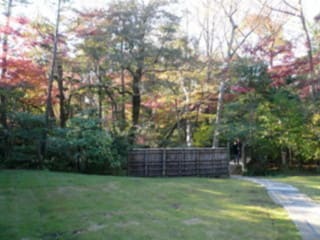The Nezu Museum located in Minami-Aoyama in Tokyo reopened last autumn after having been remodeled for over 3 years.

This museum was founded in 1941 by Kaichiro Nezu who was a big businessman to exhibit his large collection of Japanese and East Asia arts.
The site of the museum covering more than 20,000 square meters used to be his private residence and garden.
Since Mr. Nezu was known as a connoisseur of "Cha-no-yu", or the tea ceremony, the garden was tasteful; it was dotted with four tea houses and many stone ornaments.

It was a fine day. I strolled in the garden surrounded by deciduous trees. It was so calm that I forgot I was in the heart of the city.

When I visited the garden last November, autumn leaves were so beautiful. Paticularly the water scenes reflecting the blue sky and the surrounding colored trees were impressive. I heard the visitors admire the view here and there. In this season, fresh green and Iris flowers will please your eyes.


The garden seems to serve as an oasis in the midst of the hustle and bustle of the city.

























